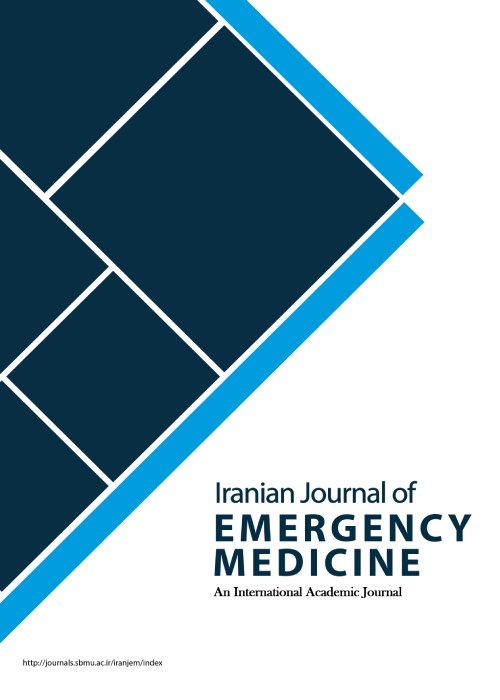Evaluating the Time Interval between Calling Emergency Medical Services and Undergoing Primary Percutaneous Coronary Intervention in Patients with Acute Myocardial Infarction
Author(s):
Abstract:
Introduction
Primary percutaneous coronary intervention (PPCI) is the intervention of choice for treating patients with acute myocardial infarction (MI). This study was done aiming to measure the time interval between the patient calling emergency medical services (EMS) to performance of primary angioplasty on patients with acute MI.Methods
The present cross-sectional study was carried out on patients brought to emergency department (ED) by EMS who complained from cardiac chest pain and underwent primary PCI. Data regarding age, sex, and various time intervals from the moment the patient calls emergency medical service until performing primary PCI, which were accurately recorded in their medical profile, were gathered in a pre-designed checklist and analyzed.Results
Data of 121 patients with the mean age of 58.36 ± 12.09 years was assessed (77.68% male). Mean time interval between calling EMS and undergoing primary PCI was 145.84 ± 62.37 minutes. Mean time interval between arriving at triage and primary PCI (door to balloon time) was 104.61 ± 62.37 minutes. The biggest part (32%) belonging to the time interval between diagnosis of acute MI and dislocation of patient to the angiography unit. The difference between door to balloon time in this study and the standard 90-minutes time was 14.61 minutes (minimum 3.38; maximum 25.83), which is significant (p = 0.011).Conclusion
Although in the present study, most patients underwent primary PCI in less than 3 hours of calling EMS following chest pain, comparing the overall door to balloon time in the present study with the 90-minute standard showed a significant difference. With EMS staff obtaining the patients electrocardiogram on the scene and confirming MI diagnosis before reaching the hospital, the patient can be directly delivered to angiography unit and the door to balloon time can be reduced by about 57%.Keywords:
Language:
Persian
Published:
Iranian Journal of Emergency medicine, Volume:4 Issue: 3, 2017
Pages:
118 to 124
magiran.com/p1710779
دانلود و مطالعه متن این مقاله با یکی از روشهای زیر امکان پذیر است:
اشتراک شخصی
با عضویت و پرداخت آنلاین حق اشتراک یکساله به مبلغ 1,390,000ريال میتوانید 70 عنوان مطلب دانلود کنید!
اشتراک سازمانی
به کتابخانه دانشگاه یا محل کار خود پیشنهاد کنید تا اشتراک سازمانی این پایگاه را برای دسترسی نامحدود همه کاربران به متن مطالب تهیه نمایند!
توجه!
- حق عضویت دریافتی صرف حمایت از نشریات عضو و نگهداری، تکمیل و توسعه مگیران میشود.
- پرداخت حق اشتراک و دانلود مقالات اجازه بازنشر آن در سایر رسانههای چاپی و دیجیتال را به کاربر نمیدهد.
In order to view content subscription is required
Personal subscription
Subscribe magiran.com for 70 € euros via PayPal and download 70 articles during a year.
Organization subscription
Please contact us to subscribe your university or library for unlimited access!


